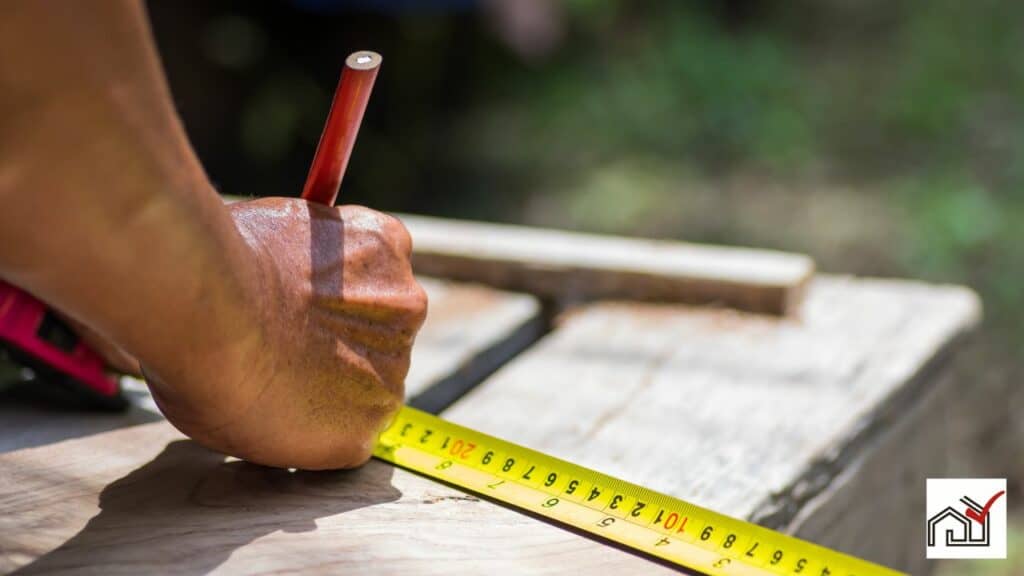The conventional order for dimensions is length (L), width (W), and height (H).
This standard is accepted globally in both imperial and metric systems, and understanding it is the key to calculations involving dimensions, from a simple box to intricate architectural designs.
This dimensions’ order ensures consistency and simplifies communication, eliminating potential confusion in fields such as engineering, architecture, and construction, where precise measurements are critical.
Let’s talk about this in more detail now.
Definition and Systems of Measurement of Length, Width, and Height
Diving into dimensions involves understanding terms like length, width, and height.
These terms describe the size and shape of three-dimensional objects and are essential for calculating volume and area.
Let’s define these terms:
- Length: This is the distance from one end of an object to the other, typically the longest dimension. For instance, when measuring a pencil or a bridge, length refers to the longest distance.
- Width: This is the horizontal measurement perpendicular to the length, usually the shorter dimension. For example, the width of a television screen is the distance from one side to the other.
- Height: This refers to the vertical distance from the base to the top of an object. For instance, the height of a building is the distance from the ground to its highest point.
Understanding length, width, and height allows you to accurately describe the physical world around you.
Imperial System for Measuring Length, Width, and Height
The Imperial system uses units like inches, feet, yards, and miles for measurements.
These units help measure the dimensions of objects, calculate volume and area, and ensure uniformity in measurements.
Each unit serves a specific function and is used for different measurement types.
For example, inches measure small objects such as a pencil’s length or a book’s width.
Feet is used for medium-sized measurements like a person’s height or the width of a room.
Yards measure larger objects like the length of a football field or a tall tree’s height.
Miles are used for vast distances like the distance between two cities.
Here’s a brief reference table:
| Imperial Unit of Measure | Typical Use |
|---|---|
| Inches | Small objects |
| Feet | Medium-sized objects |
| Yards | Large objects |
| Miles | Very large distances |
Metric System for Measuring Length, Width, and Height
The Metric system uses units like millimeters, centimeters, meters, and kilometers for measurements.
Similar to Imperial units, Metric units are also used to measure the dimensions of objects, calculate volume and area, and ensure uniformity in measurements.
Each unit serves a specific function and is used for different measurement types.
For example, millimeters measure tiny objects such as a pin’s length or a chip’s width.
Centimeters are used for small measurements like the width of a book or a pencil’s length.
Meters measure larger objects like the height of a person or the width of a room.
Kilometers are used for vast distances like the distance between two cities or across a country.
Here’s a brief reference table:
| Metric Unit of Measure | Typical Use |
|---|---|
| Millimeters | Tiny objects |
| Centimeters | Small objects |
| Meters | Medium to large objects |
| Kilometers | Very large distances |
Understanding these measurement systems and their appropriate use can simplify tasks that need precise measurements.
Why Is the Order of Length, Width, and Height Important?

The order of length, width, and height ensures consistency, precision, and accuracy when calculating volume and area.
Maintaining the correct order directly impacts the results of these calculations.
Consistency in Measurements
Consistency in measurements is vital to prevent confusion and misunderstanding.
When stating dimensions, follow the standard order: length, width, height.
Here are some benefits of stating dimensions in this consistent order:
- Clear communication: Using the same order makes dimensions easy to understand.
- Fewer errors: Consistency helps avoid mix-ups that can lead to expensive mistakes.
- Assists in design and planning: Architects and designers depend on this order for precise planning.
- Supports international trade: Uniform measurements are key in global business.
- Streamlines tasks: Consistent dimensions simplify activities like packing, shipping, and arranging.
Calculating Volume and Area
Calculating the volume and area of objects is simpler and more efficient with consistent use of measurements.
For example, when working with a cuboid, the volume is the product of its length, width, and height.
To avoid errors, use the same sequence: length, width, then height.
This method leads to accurate calculations. Also, if you’re finding the area, use the same order: length and width.
How to Measure Length, Width, and Height?
To measure length, width, and height, first pick the right measurement system: Imperial or Metric.
Then, use a tool marked with the respective units, such as a ruler or measuring tape. The tool should be appropriate for the object’s size.
Measure length by recording the object’s longest dimension.
Width is the horizontal distance at a right angle to the length, typically the shorter dimension.
Height is the vertical distance from the object’s base to its top.
If you want, convert the units from Imperial to Metric system or vice-versa. For example, 1 foot equals 12 inches, and 1 yard equals 3 feet.
In short, here are the steps to measure length, width, and height:
- Select the proper measurement system (Imperial or Metric).
- Use an appropriate measuring tool.
- Measure length, width, and height.
- Convert units if needed from Imperial to Metric or vice-versa.
- Check your measurements for accuracy.
With practice, measuring becomes easier.





